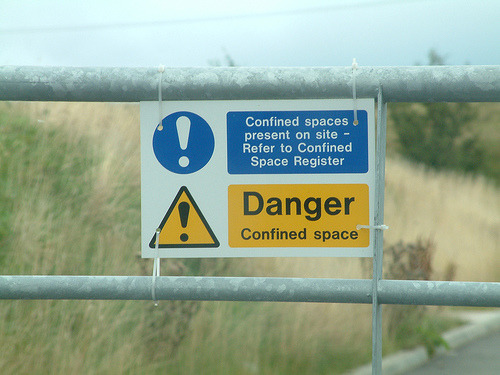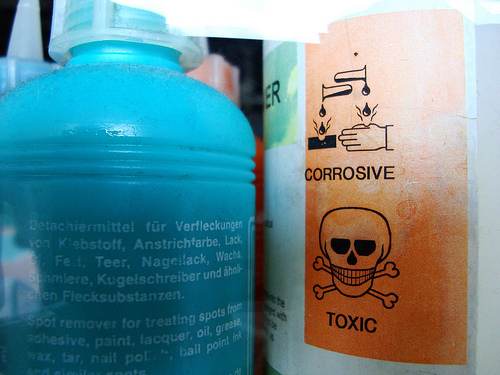Federal laws protect individuals against job discrimination based on a variety of “protected classes” of characteristics. Most represent physical characteristics, such as race, sex, and disability. In addition, however, Title VII of the Civil Rights Act of 1964 prohibits a prospective employer from refusing to hire an applicant in order to avoid accommodating a religious practice that it could accommodate without undue hardship.
Audit, Compliance and Risk Blog
Jon Elliott
Recent Posts
Supreme Court Expands Employers’ Duty To Avoid Religious Discrimination
Posted by Jon Elliott on Thu, Jul 09, 2015
Tags: Corporate Governance, Business & Legal, Employer Best Practices, Employee Rights, EEOC, NLRB
Management of chemicals by your organization raises a host of environmental health and safety (EH&S) issues. Some of those issues are represented by legal and regulatory compliance requirements, others by formal but non-binding programs that range from company policies to ISO certifications. In response, organizations adopt and implement a wide variety of EH&S programs, including very broad ones (e.g., compliance with the Hazard Communication Standard) as well as very narrow ones (e.g., programs for managing entry into Confined Spaces). Organizations with sufficient resources and the will to organize themselves will create systematic programs to evaluate EH&S issues to ensure they’re addressed, and to design and coordinate programs in ways that do so effectively and efficiently. (In 2013-2014 I prepared a series of e-books that outlined EH&S regulatory requirements triggered by chemicals - click here to download).
Tags: Audit Standards, Health & Safety, OSHA, Environmental risks, Environmental, EHS, Hazcom
July 1 Deadline For California’s Revised Industrial Storm Water Requirements
Posted by Jon Elliott on Tue, Jun 30, 2015
The federal Clean Water Act (CWA) and state water quality laws (including California’s Porter-Cologne Water Quality Control Act) govern activities that may affect “waters of the United States.” Routine discharges from industrial and public sources make up most potentially polluting discharges, and are subject to National Pollutant Discharge Elimination System (NPDES) permits and California Waste Discharge Requirements (WDRs), but additional requirements also apply to potential “storm water” runoff from rainwater and snow, which can entrain oils and other pollutants and wash them down storm drains into water bodies. The US Environmental Protection Agency (EPA) established the first broad-based national program in 1990, and has revised and expanded requirements over the past quarter century (often in response to court decisions finding its efforts inadequate). States have followed suit. For example, in 2014 California updated its industrial storm water requirements, replacing a general permit adopted in 1997 with a new one that becomes effective on July 1, 2015. The new permit revises and expands requirements, including narrowing exemptions for “light industry” facilities to become conditional exemptions subject to certification requirements, and addition of detailed requirements for “preproduction plastic” materials. The remainder of this note summarizes the new California requirements, which generally are comparable to EPA’s national general permit (last updated in 2008)–so readers outside California should remember that your facilities face analogous responsibilities.
Tags: Health & Safety, California Legislation, Environmental risks, Environmental, EPA, Hazcom
EPA and Corps of Engineers (Re)define “Waters of the United States”
Posted by Jon Elliott on Tue, Jun 23, 2015
Last week the U.S. Occupational Safety and Health Administration (OSHA) issued its first detailed standard requiring employers in the construction sector to define confined spaces in their workplaces, and to implement training and safety programs to protect employees. This new standard incorporates longstanding requirements for most employers (what OSHA calls “General Industry”), with enhancements based on ongoing experience. Whether your organization is in construction, general industry, or another specialized sector, OSHA’s new standard provides a reminder to consider confined space safety in your workplaces. The following discussion summarizes the main issues and associated compliance requirements.
Tags: Business & Legal, Employer Best Practices, Health & Safety, OSHA, Employee Rights
The Occupational Safety and Health Administration (OSHA) adopted massive changes to its Hazard Communication Standard (HCS or Hazcom) effective May 25, 2012, updating chemical information, labeling and training requirements that had been in place since the 1980s. These revised requirements conform U.S. requirements to international guidelines under the U.N.-sponsored Globally Harmonized System of Classification and Labeling of Chemicals (GHS). Recognizing the extent of these changes, OSHA provided multi-year compliance phase-ins for employers whose workers manufacture, distribute or use chemicals. The next such deadline is June 1, 2015, when Safety Data Sheets (SDSs) must replace Material Safety Data Sheets (MSDSs) and end-user employers must ensure that their Hazcom programs reflect most of the revised requirements.
Tags: SDS, Health & Safety, OSHA, Environmental, EPA, Hazcom
As global attention to climate change and greenhouse gas (GHG) emissions has grown over the past two decades, California has been one of the leading jurisdictions. This began with statewide planning efforts in the 1990s, designed to identify and quantify GHG emissions. After the turn of the millennium it expanded to significant control requirements imposed on targeted source categories—notably a 2002 law (AB 1493) requiring the world’s first GHG emission limits on motor vehicles.
Tags: Health & Safety, Environmental risks, Environmental, EPA, Greenhouse Gas, ghg, Hazcom
Last weekend’s disastrous earthquakes in Nepal are a reminder that natural disasters can strike anywhere. Employers can and should plan for a broad range of events, and can apply guidance from occupational safety and health agencies standards when doing so. The U.S. Occupational Safety and Health Administration (OSHA) requires employers with specified activities to prepare and implement emergency action plans (EAPs), provides guidance for EAPs, and recommends that all employers prepare these plans. Employers can use this structure to prepare for earthquakes.
Tags: Corporate Governance, Employer Best Practices, OSHA, Environmental risks, Environmental, EHS, EPA
NIOSH Expands Recommendations for Tobacco-Free Workplaces and e-Cigarettes
Posted by Jon Elliott on Tue, Apr 21, 2015
As most readers know, employers have very broad responsibilities to provide their employees with a workplace that is “free from recognized hazards.” To meet this Employer’s General Duty, employers must do more than just identify and comply with applicable safety standards issued by the Occupational Safety and Health Administration (OSHA) and its equivalent (I discussed this general provision here). Employers also must take other – unspecified – steps to identify and “recognize” unregulated hazards. One important version of these steps is to watch for non-binding recommendations from OSHA, the National Institute for Occupational Safety and Health (NIOSH), and other credible organizations in industry, government and academia,
Tags: Corporate Governance, Business & Legal, Employer Best Practices, Health & Safety, OSHA, Employee Rights
Obama Expands Federal Agencies’ Responsibilities for Sustainability
Posted by Jon Elliott on Mon, Apr 13, 2015
Recent U.S. Presidents have issued a series of executive orders (EOs) that steadily expand federal agencies’ responsibilities to conduct their own activities in environmentally sound ways. President Clinton issued a number of EOs during 1993-1999 as part of “Greening the Government,” which were expanded upon and superseded by President George W. Bush’s 2007 EO Number 13423 “Strengthening Federal Environmental, Energy, and Transportation Management.” Since taking office, President Obama has continued these expansions. Last month, he issued EO Number 13693 to require “Planning for Federal Sustainability in the Next Decade.” This EO also revokes a number of President Obama’s own relevant EOs, and President Bush’s EO Number 13423.
Tags: Environmental risks, Environmental, ghg, Transportation, sustainability










